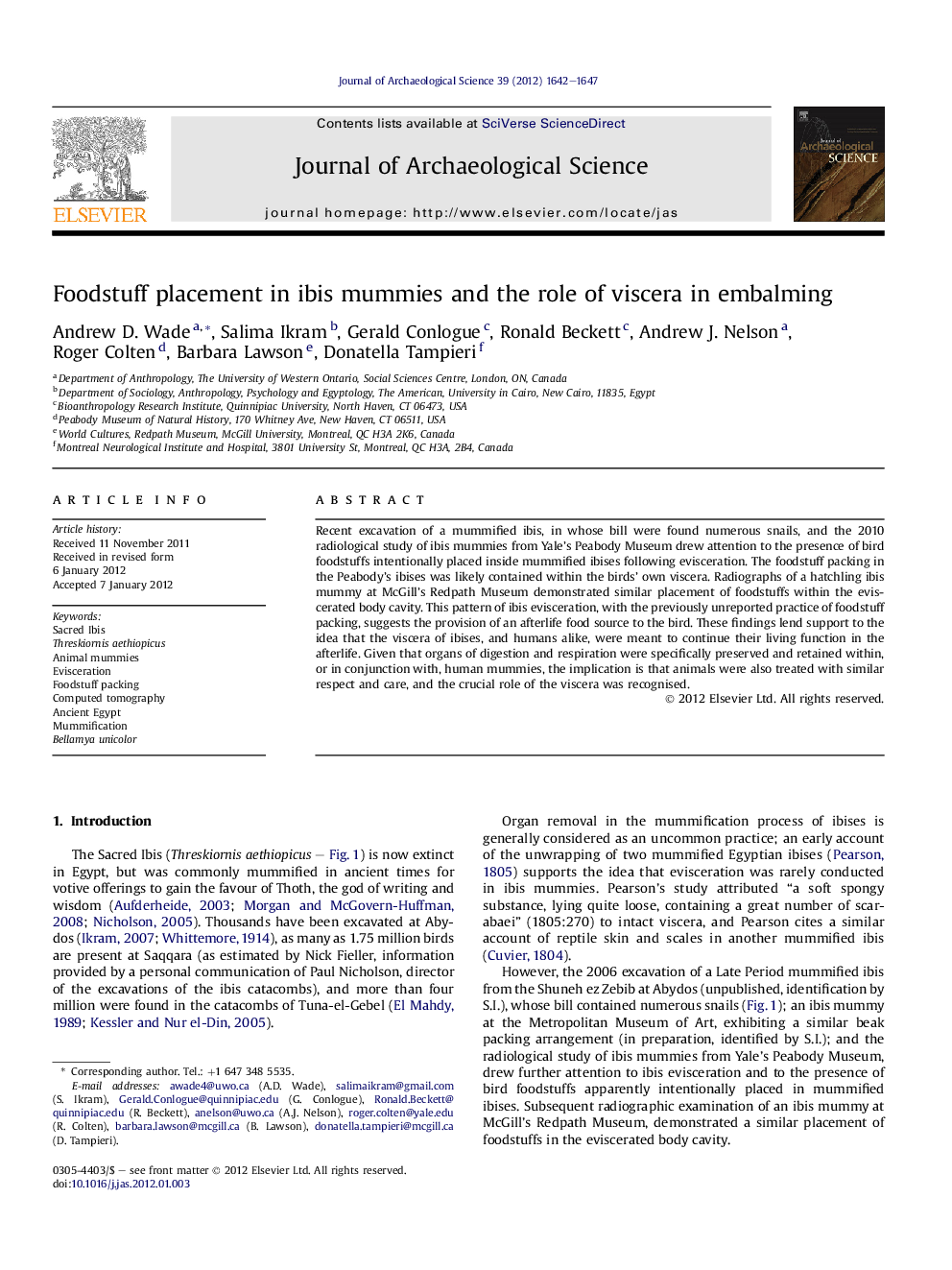| Article ID | Journal | Published Year | Pages | File Type |
|---|---|---|---|---|
| 1035781 | Journal of Archaeological Science | 2012 | 6 Pages |
Recent excavation of a mummified ibis, in whose bill were found numerous snails, and the 2010 radiological study of ibis mummies from Yale's Peabody Museum drew attention to the presence of bird foodstuffs intentionally placed inside mummified ibises following evisceration. The foodstuff packing in the Peabody's ibises was likely contained within the birds' own viscera. Radiographs of a hatchling ibis mummy at McGill's Redpath Museum demonstrated similar placement of foodstuffs within the eviscerated body cavity. This pattern of ibis evisceration, with the previously unreported practice of foodstuff packing, suggests the provision of an afterlife food source to the bird. These findings lend support to the idea that the viscera of ibises, and humans alike, were meant to continue their living function in the afterlife. Given that organs of digestion and respiration were specifically preserved and retained within, or in conjunction with, human mummies, the implication is that animals were also treated with similar respect and care, and the crucial role of the viscera was recognised.
► Demonstrates organ removal in ibises, which is generally considered rare. ► Pattern includes previously unreported practice of foodstuff packing. ► Foodstuffs suggest the provision of an afterlife food source to the bird. ► Supports idea that viscera were meant to function in the afterlife. ► Demonstrates degree to which animals were treated equally to humans in death.
